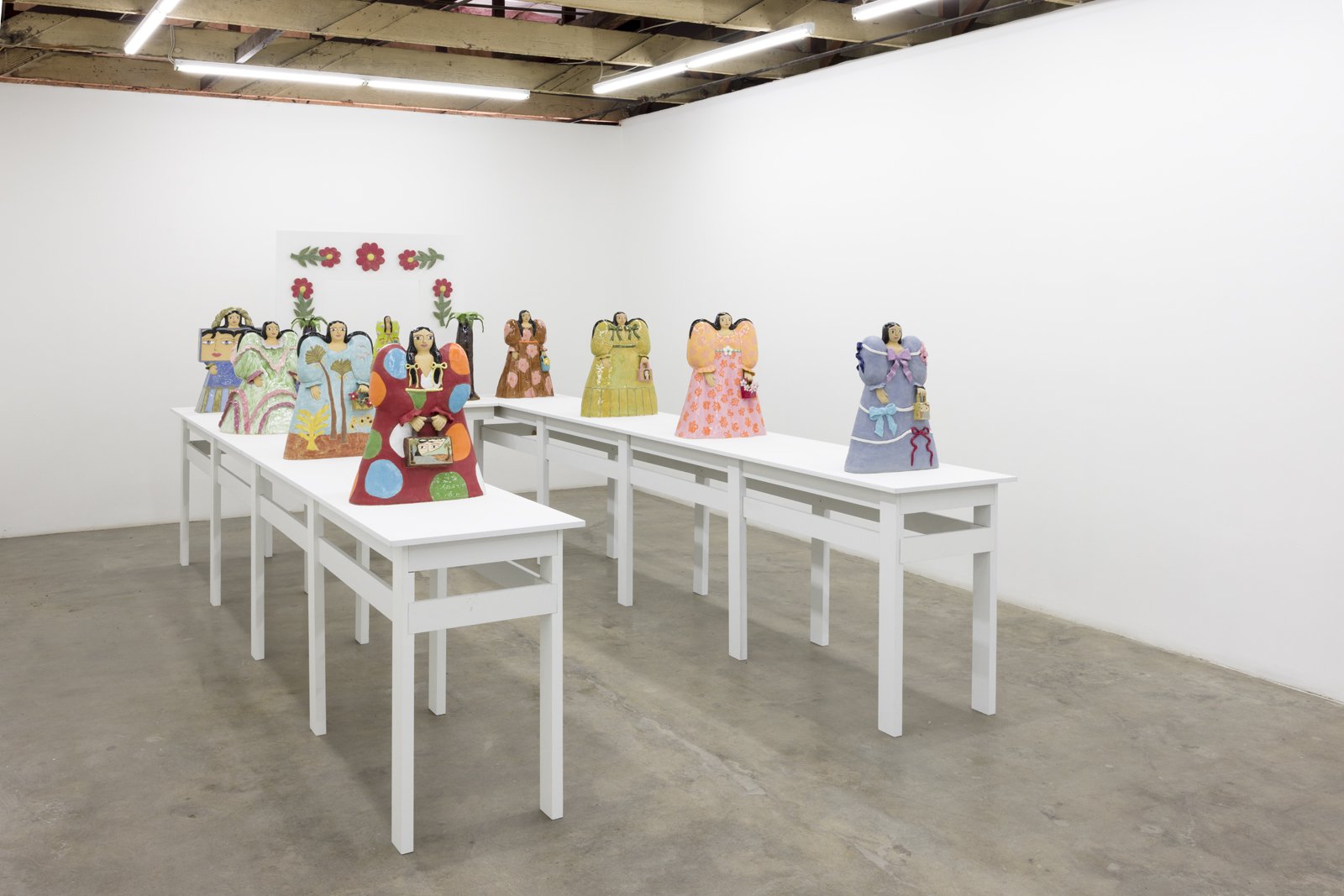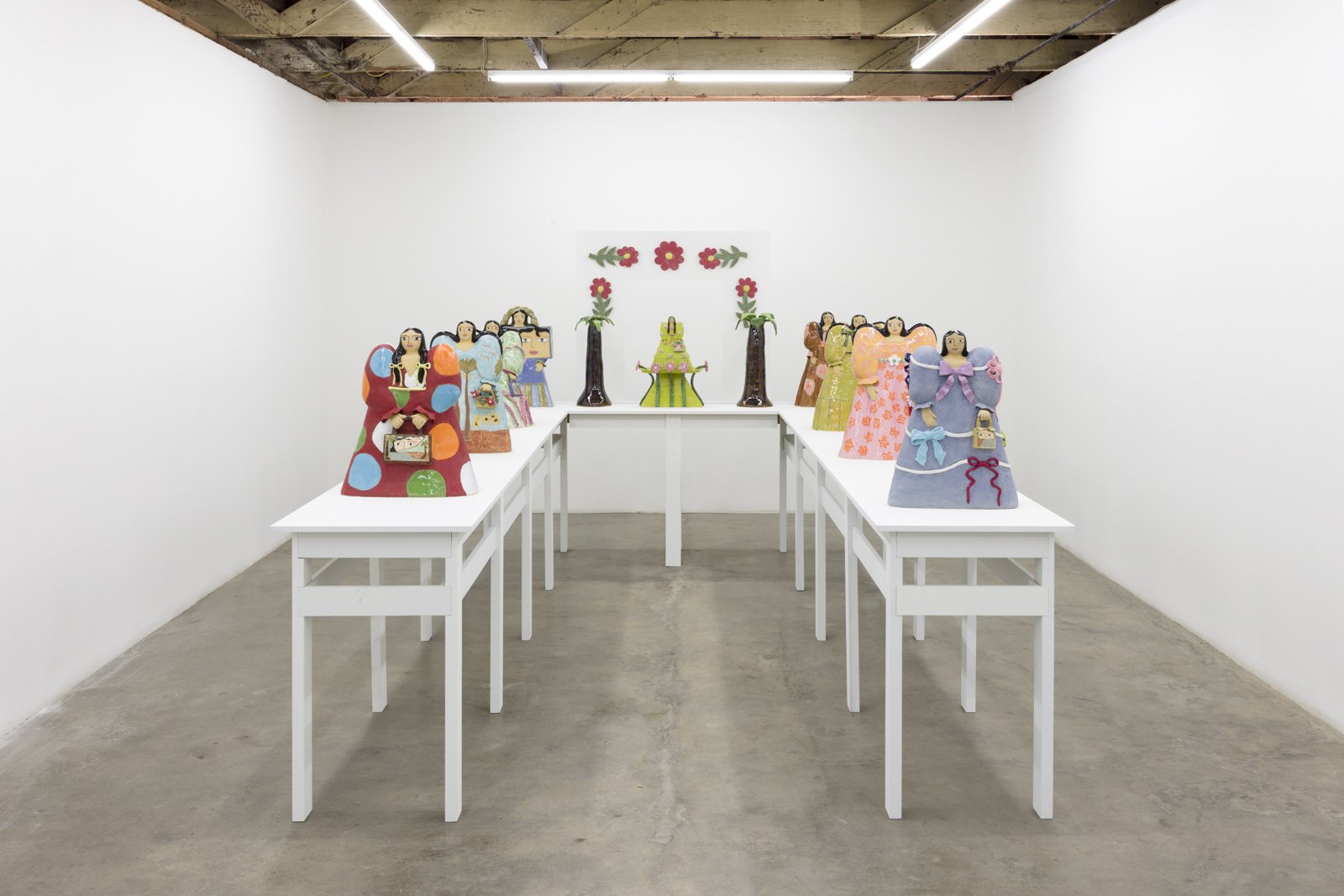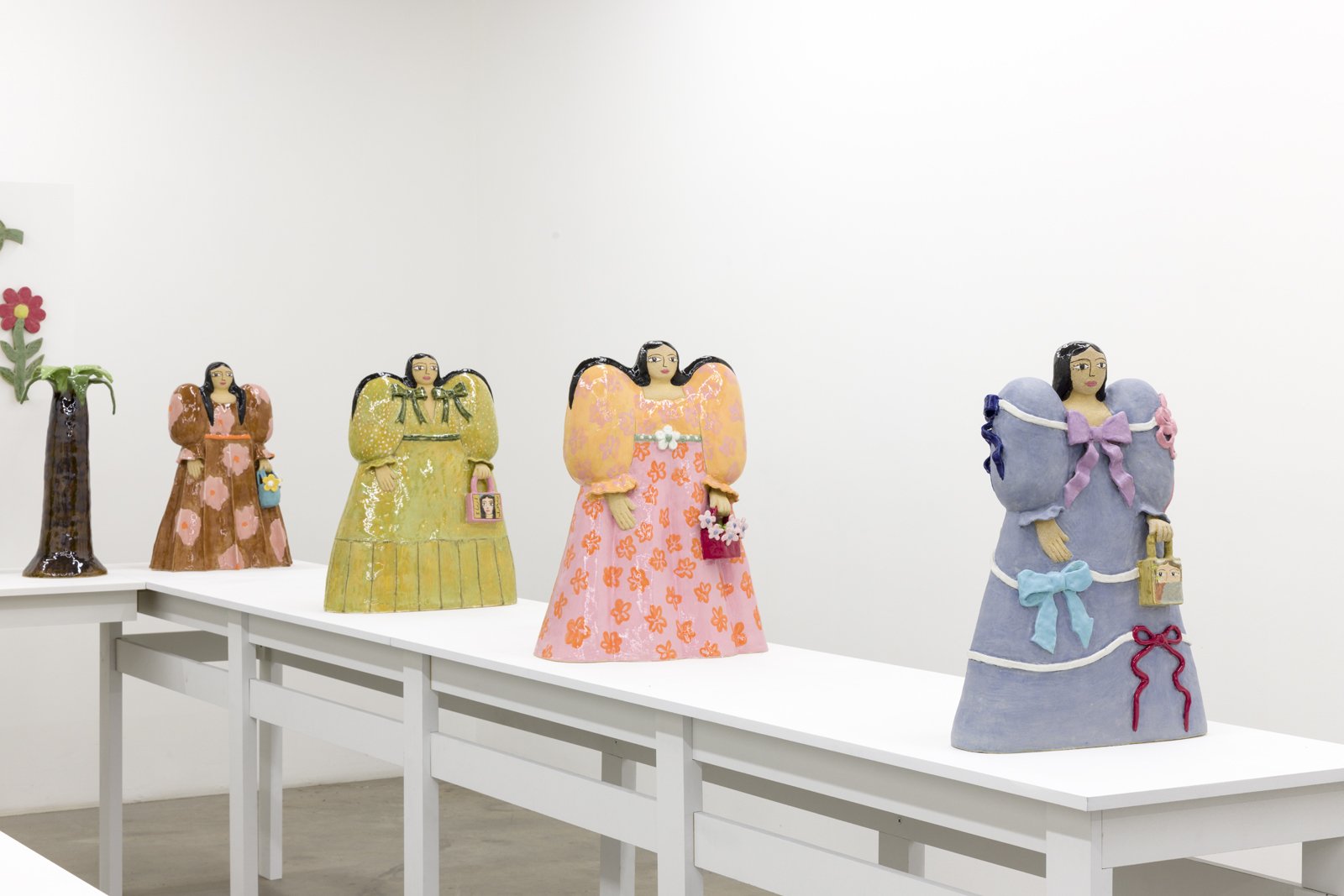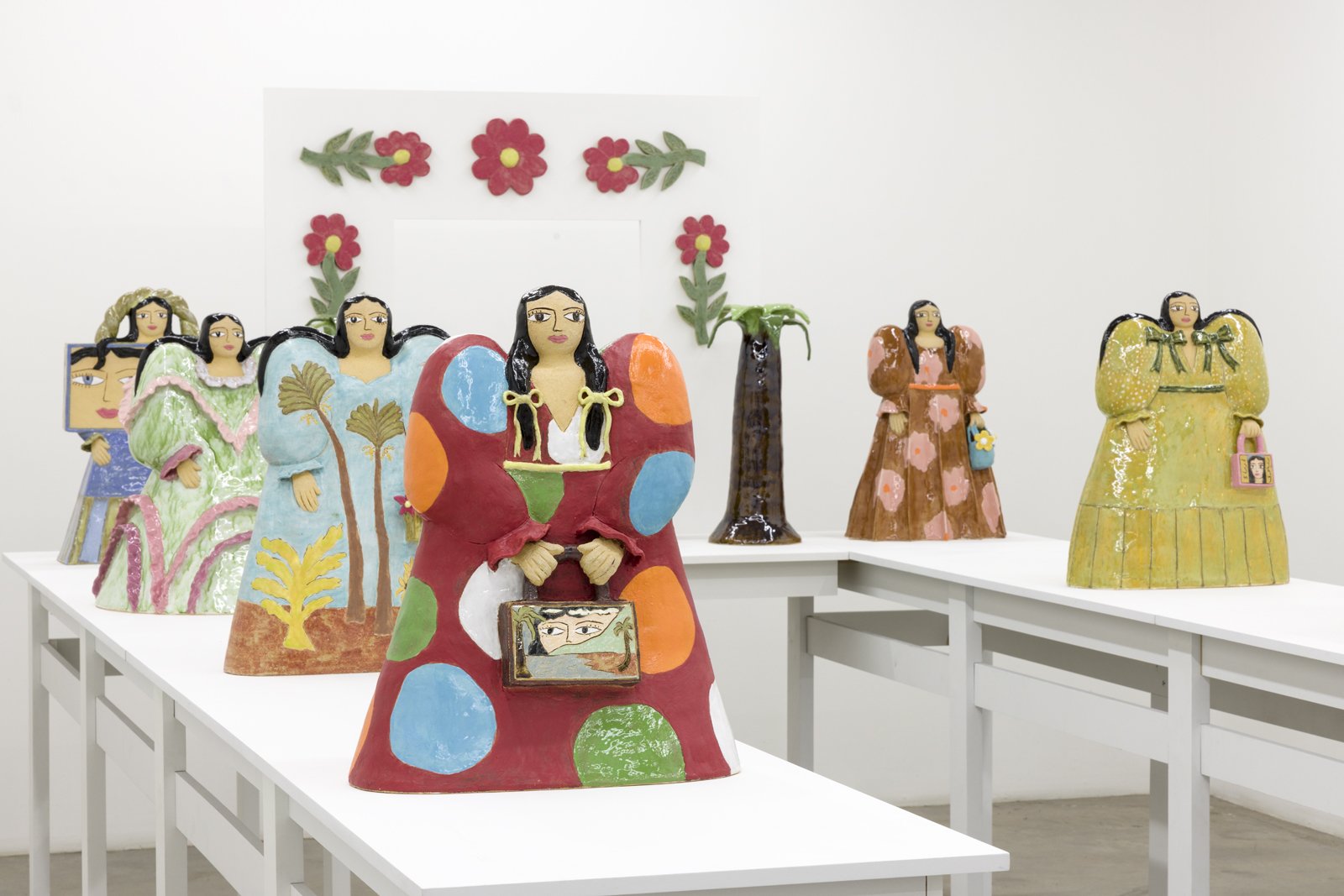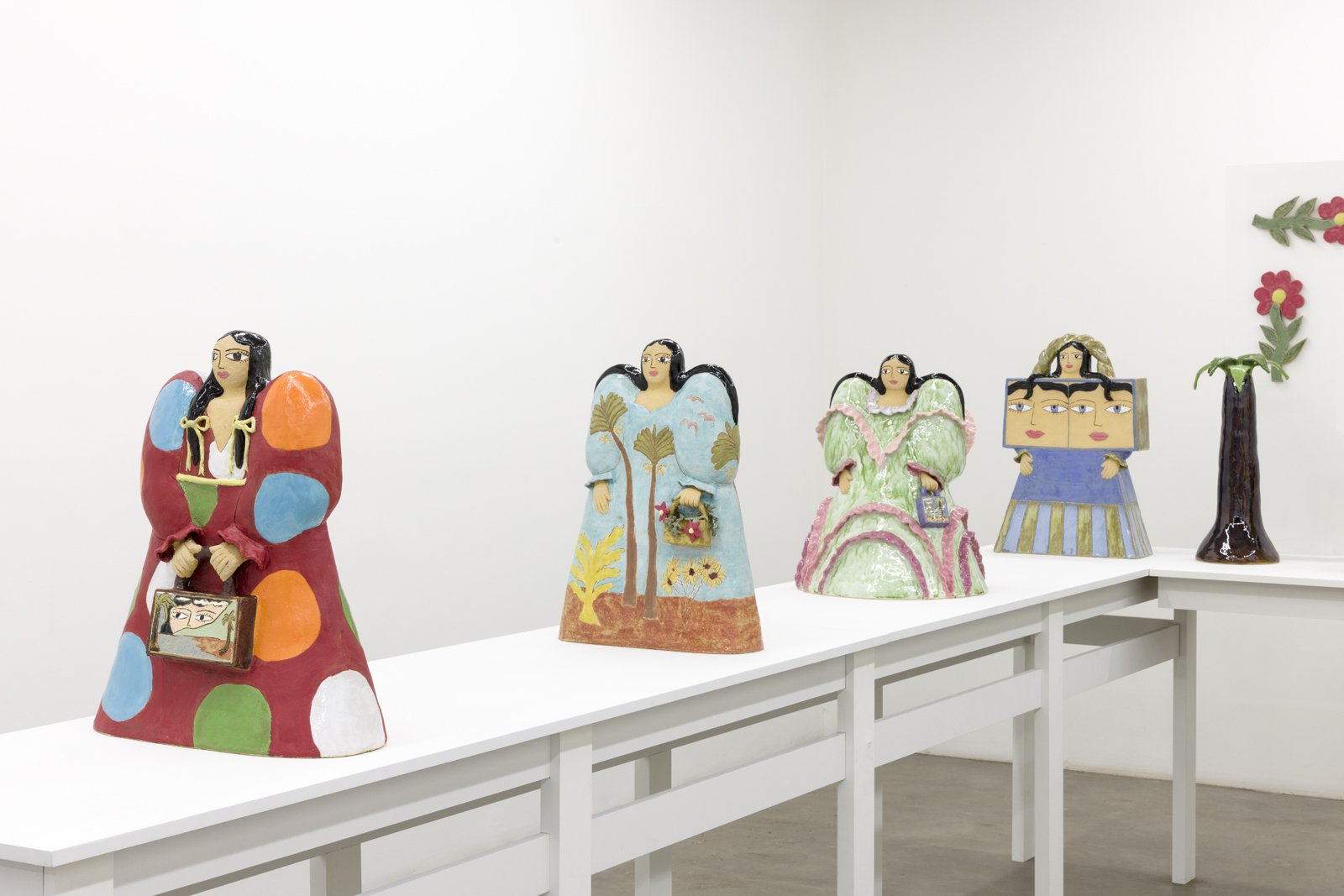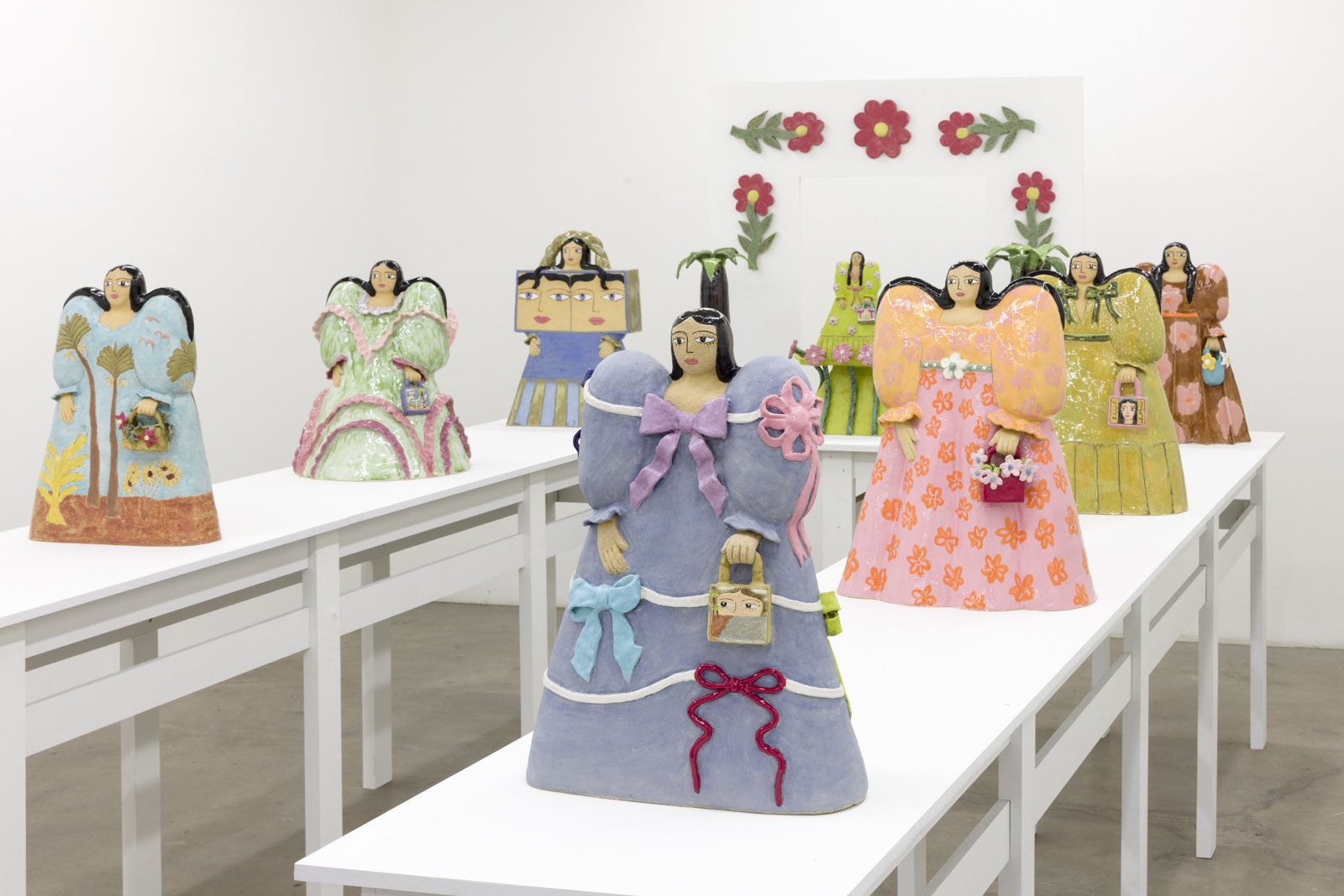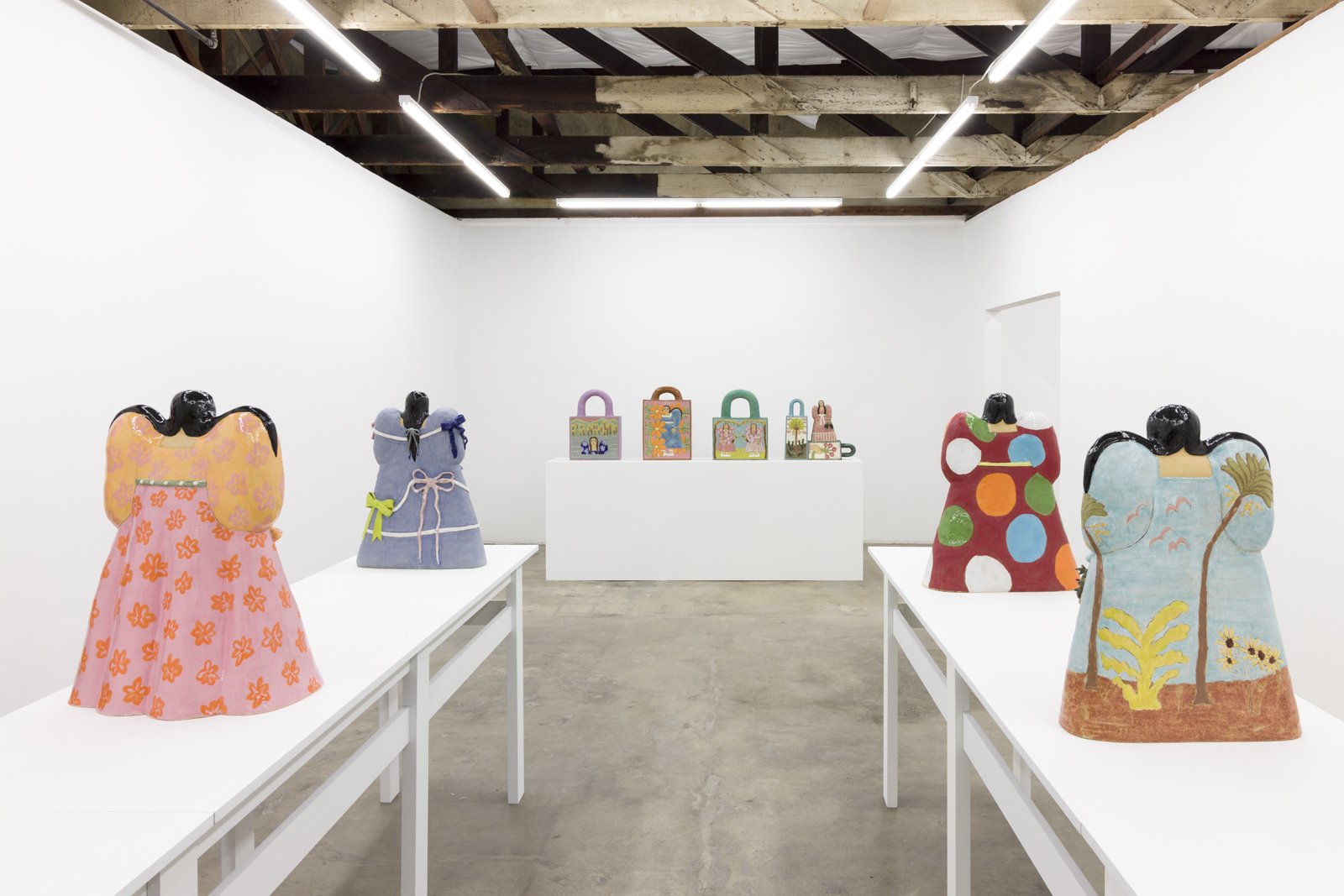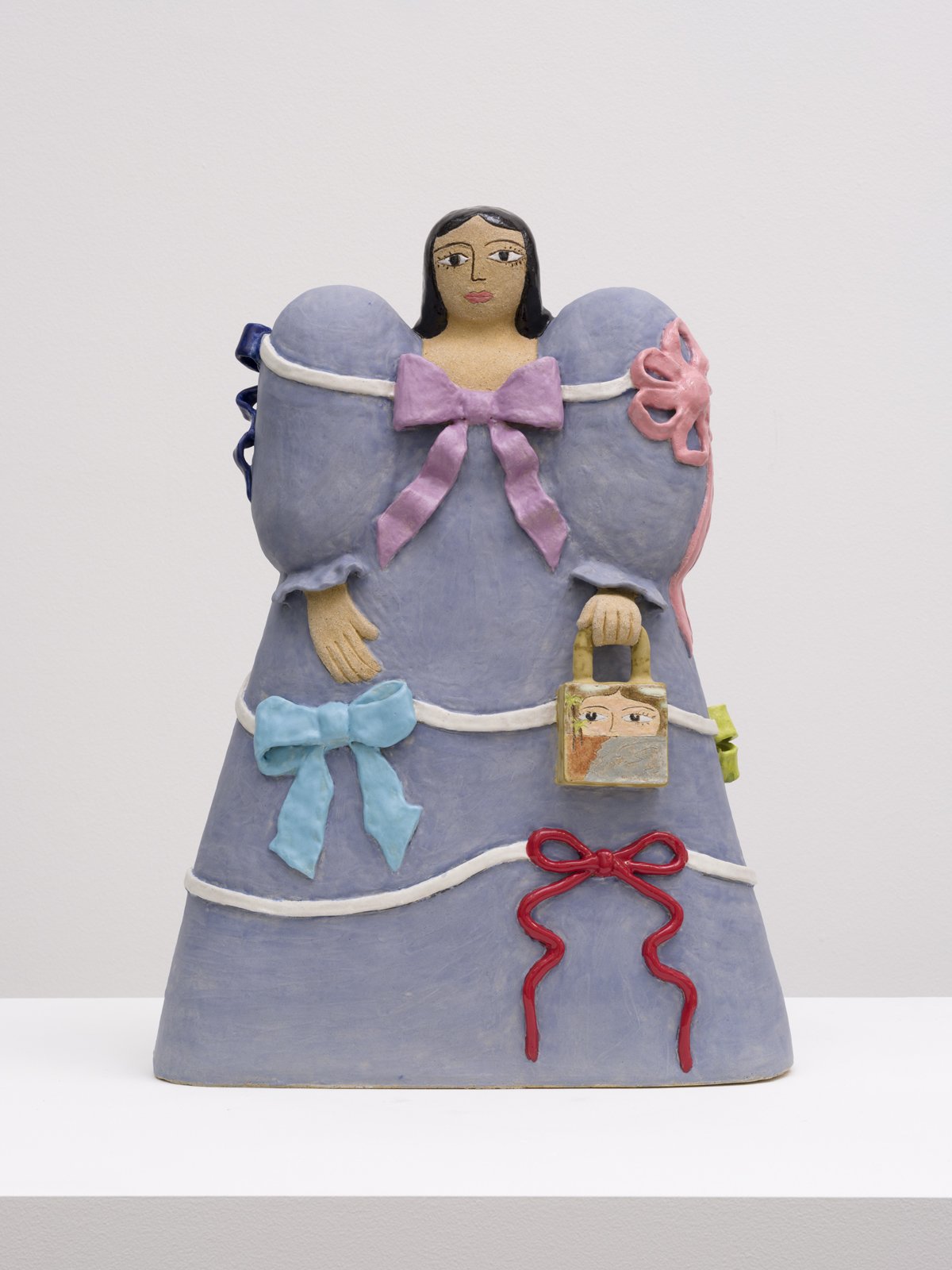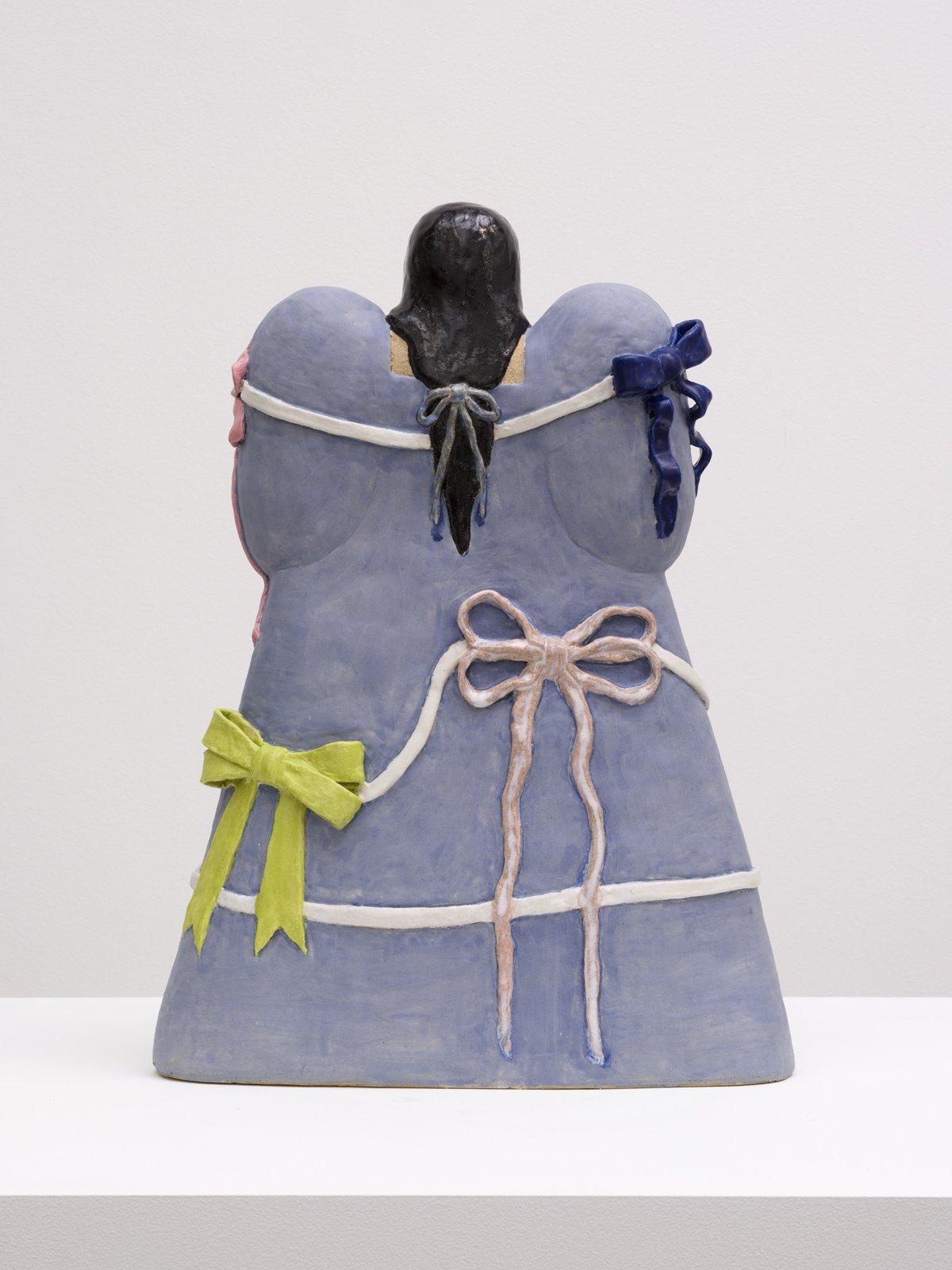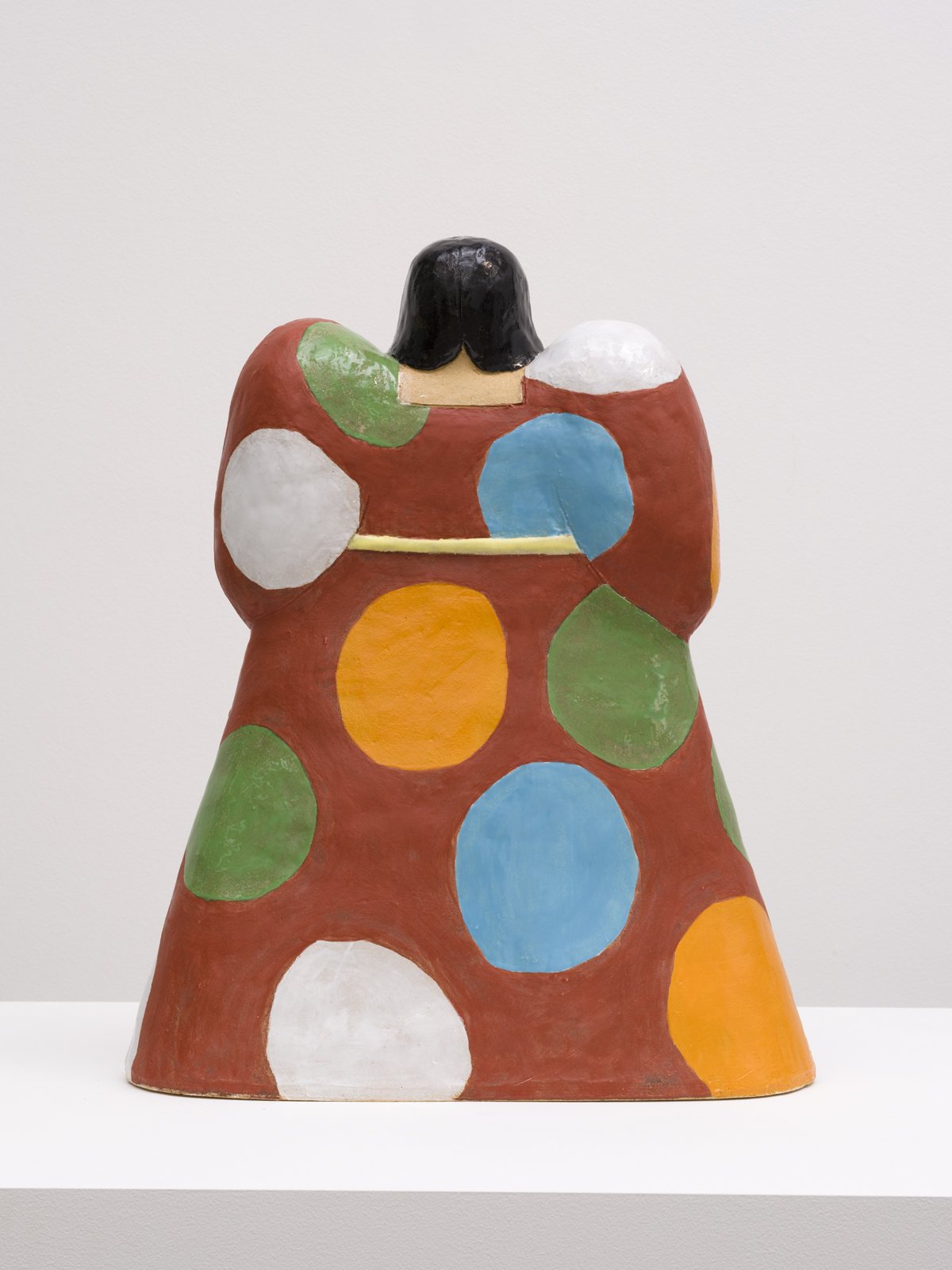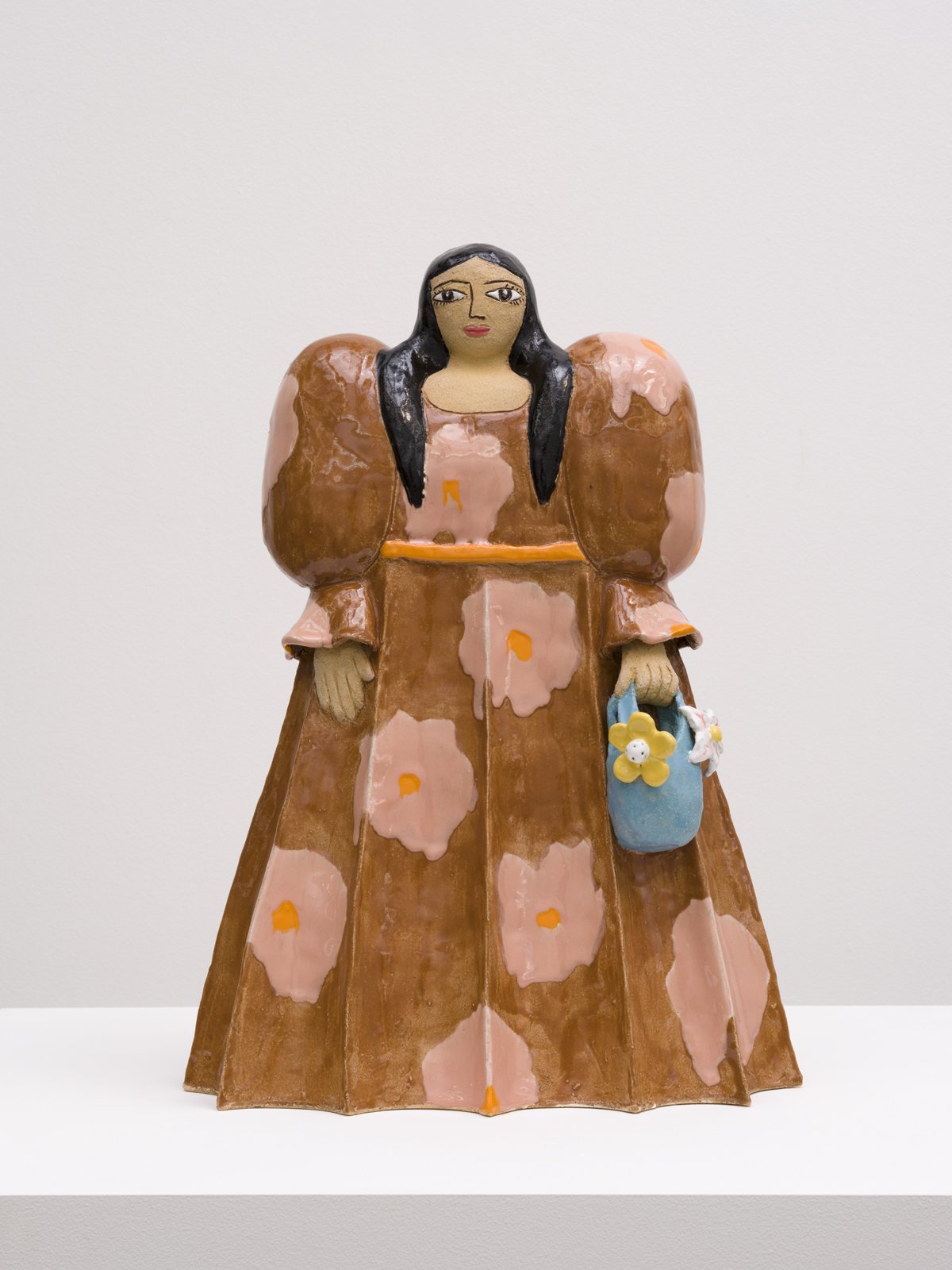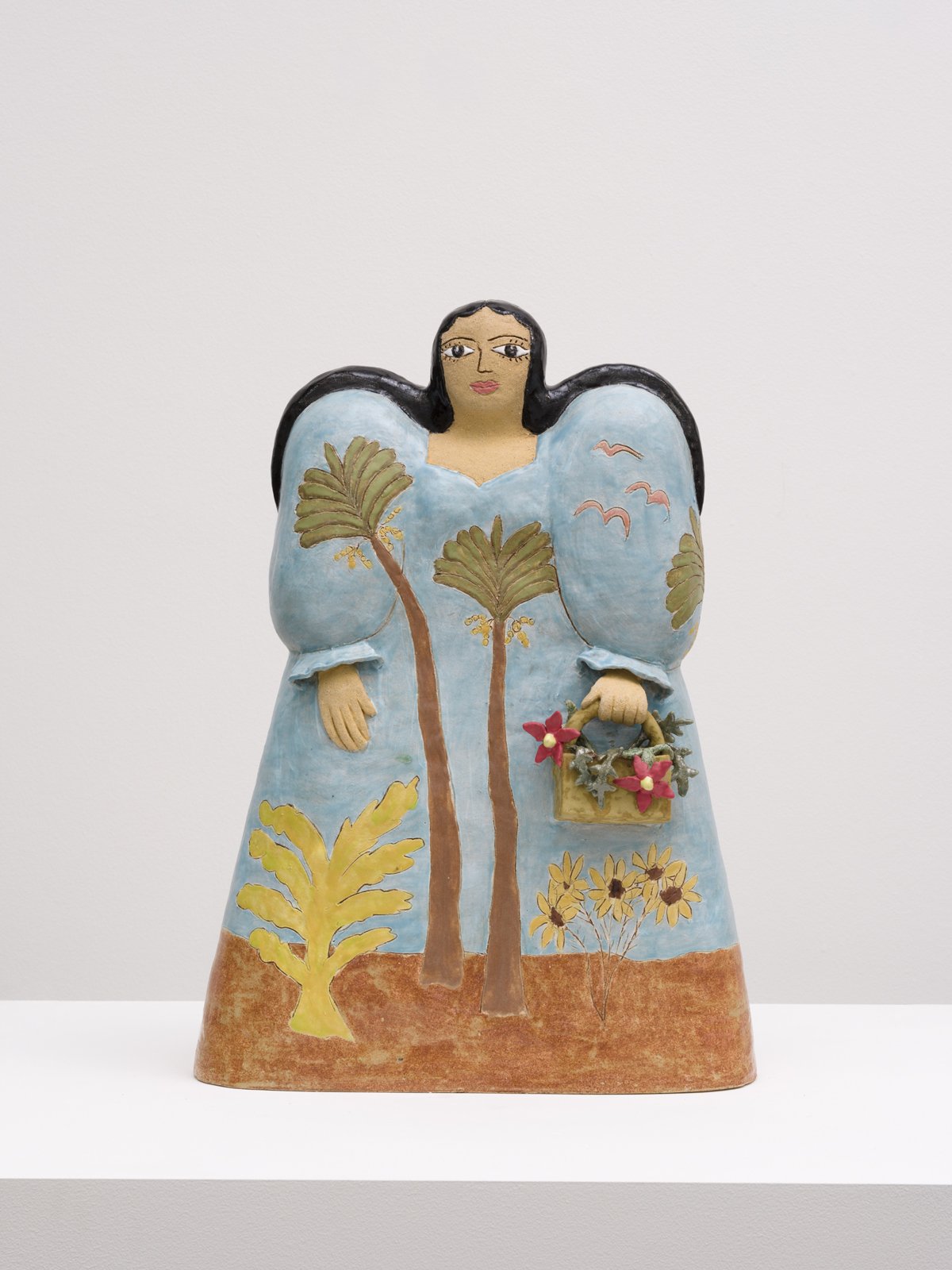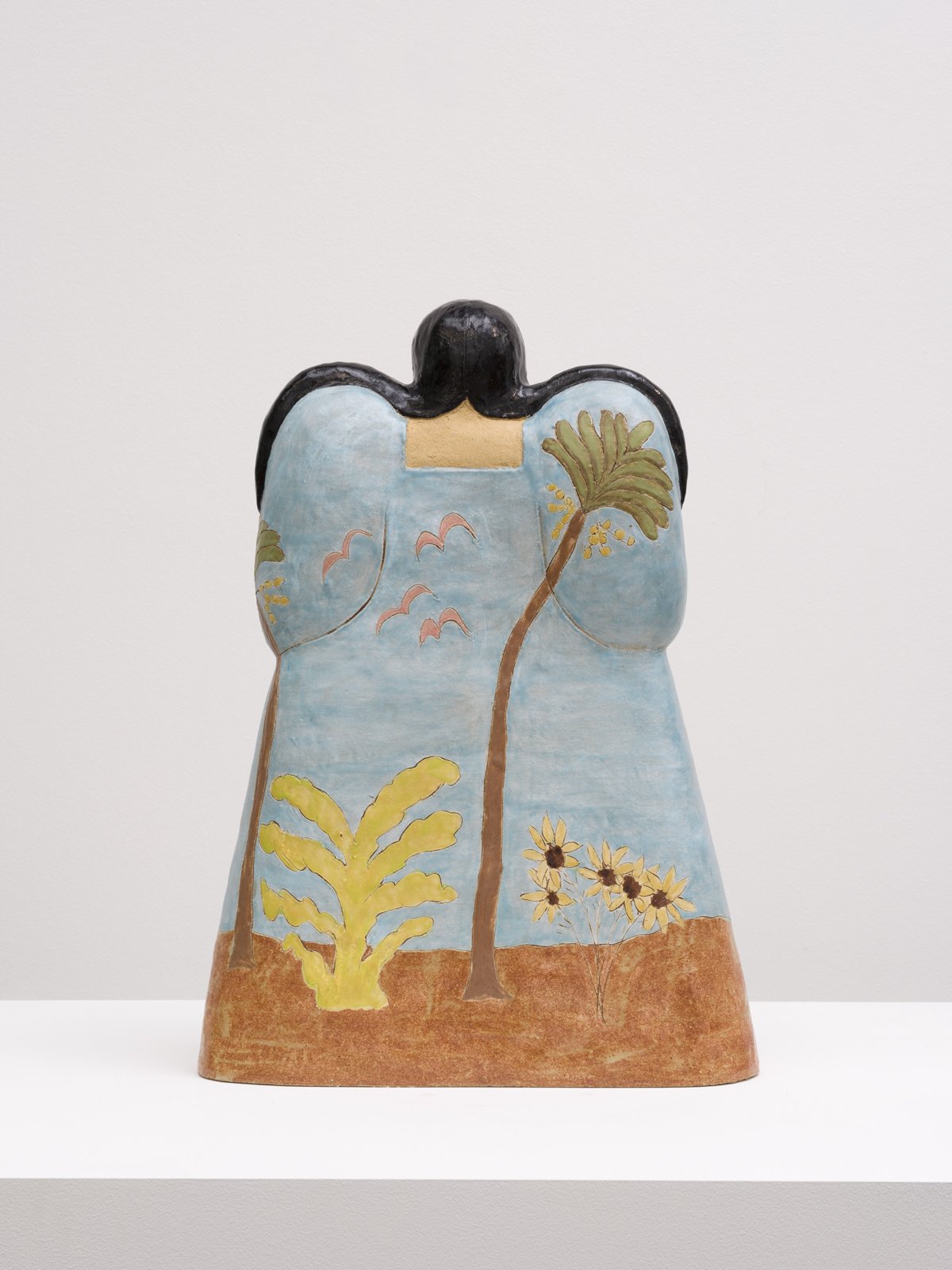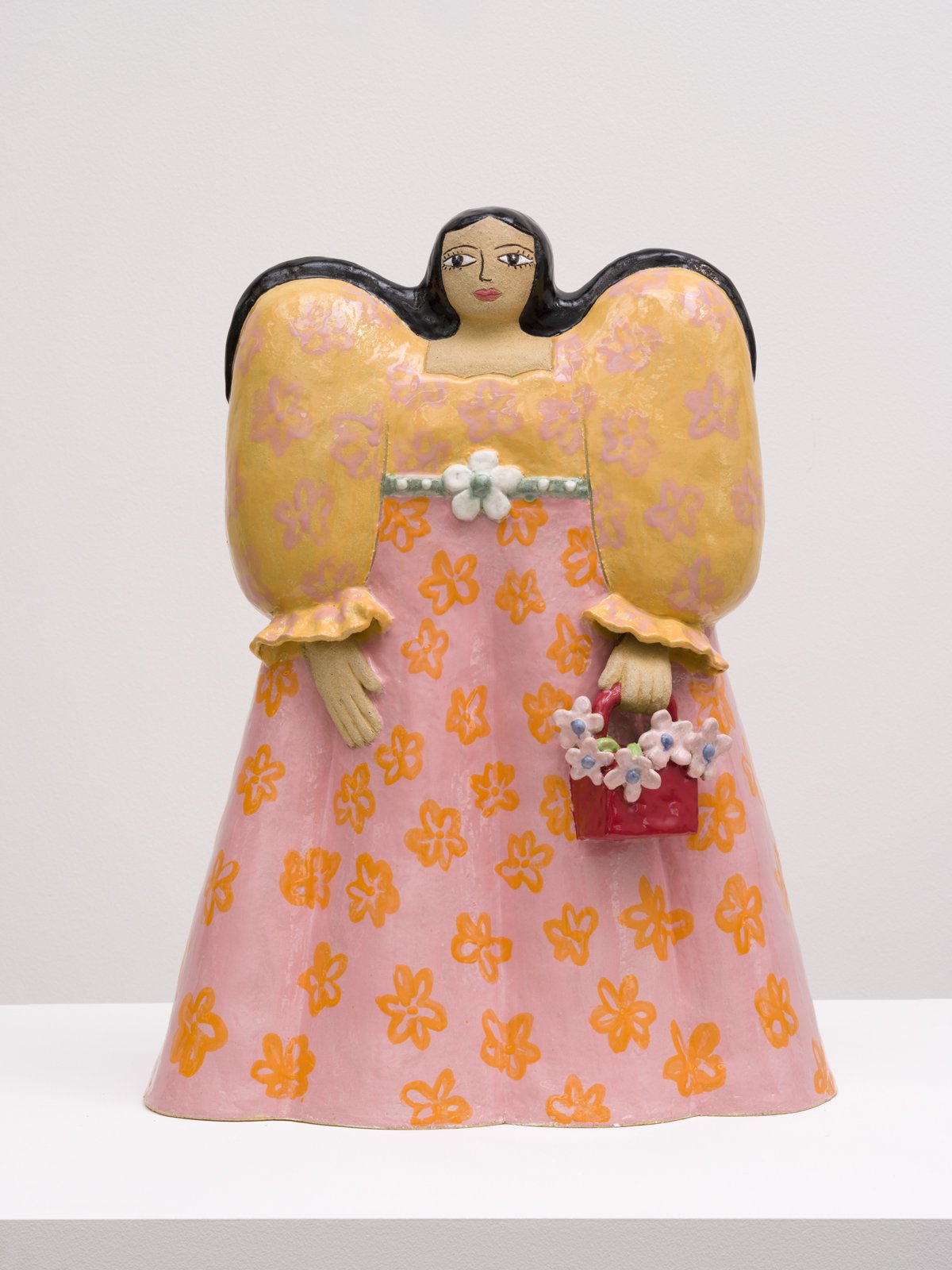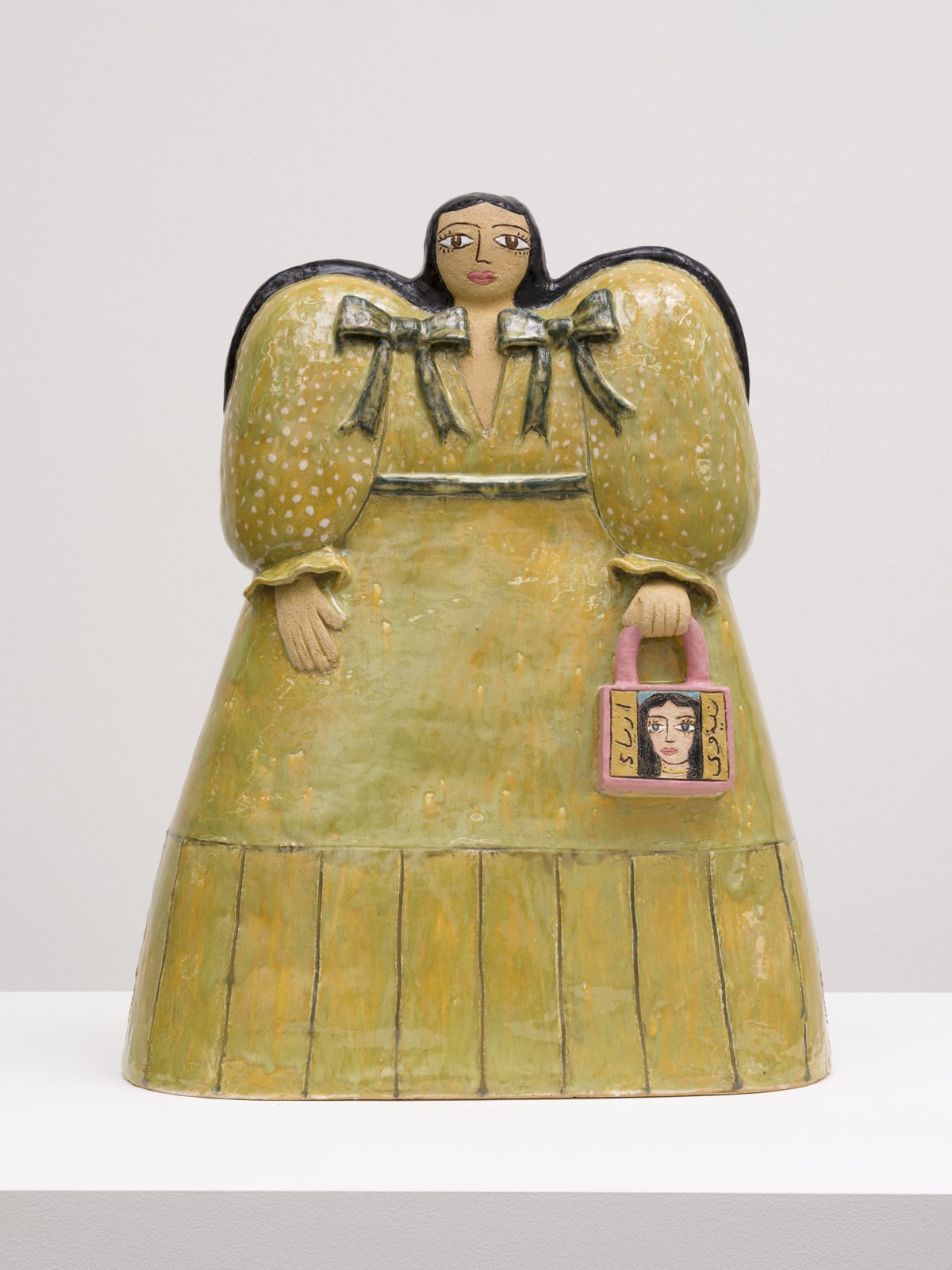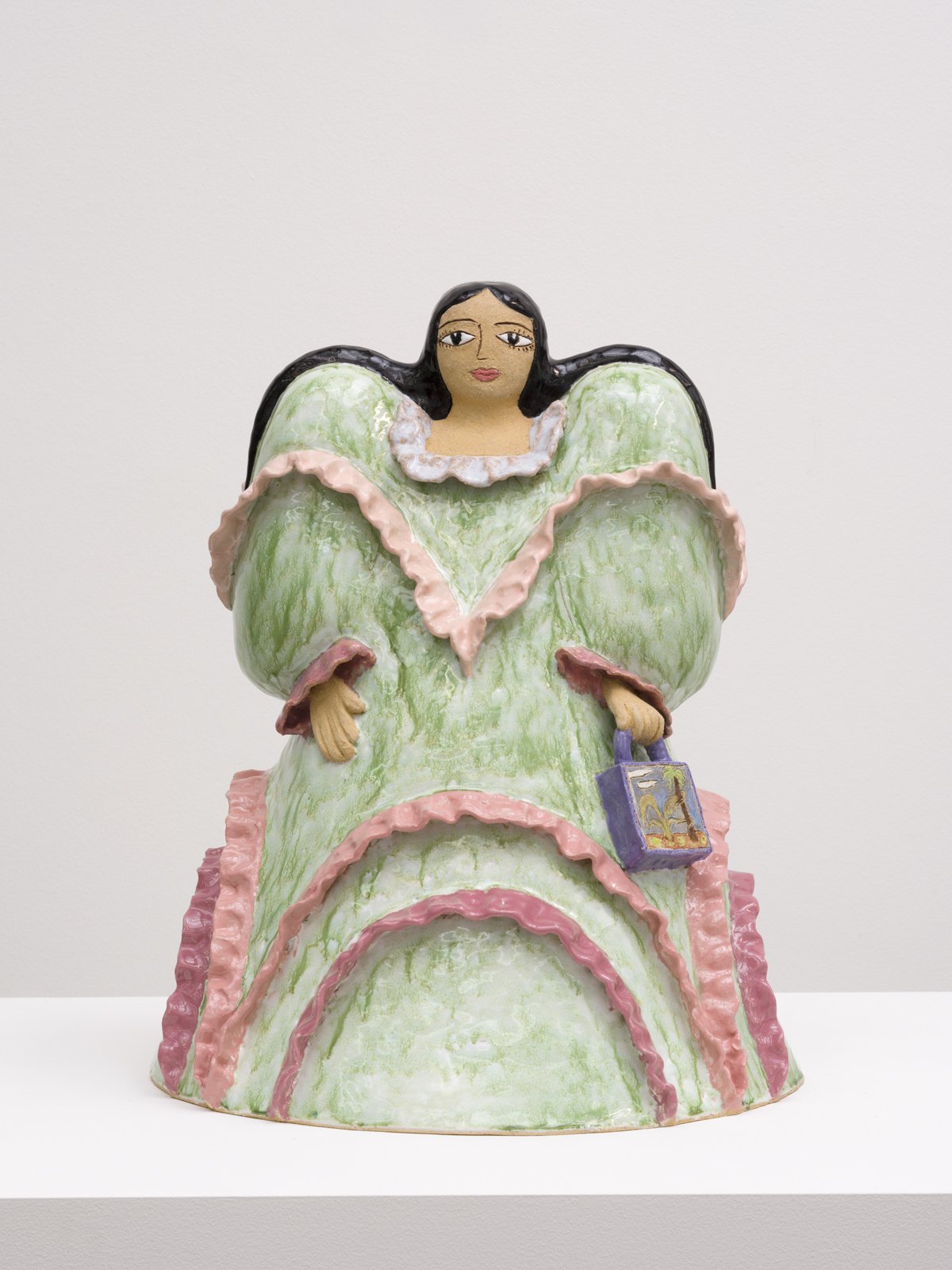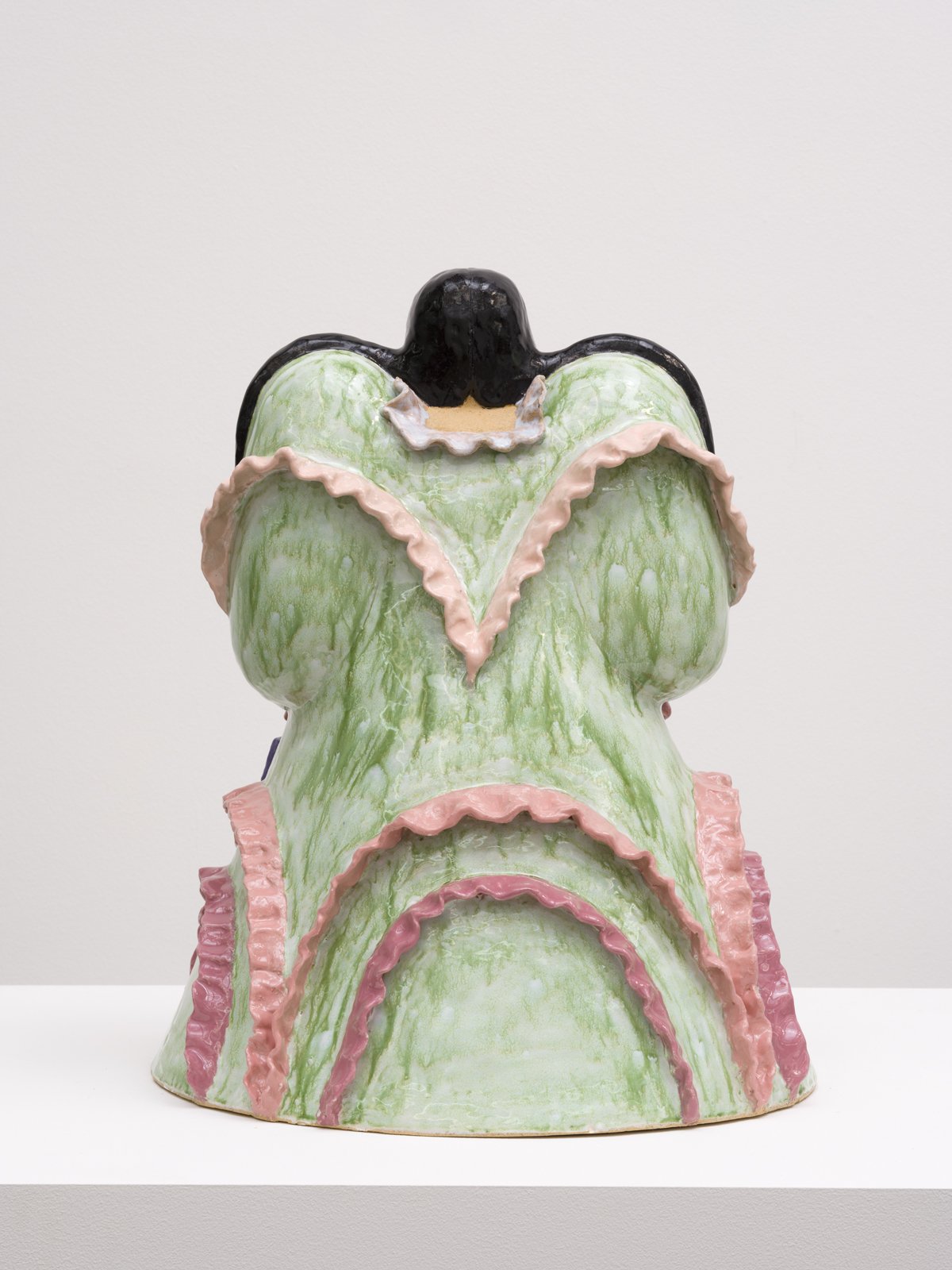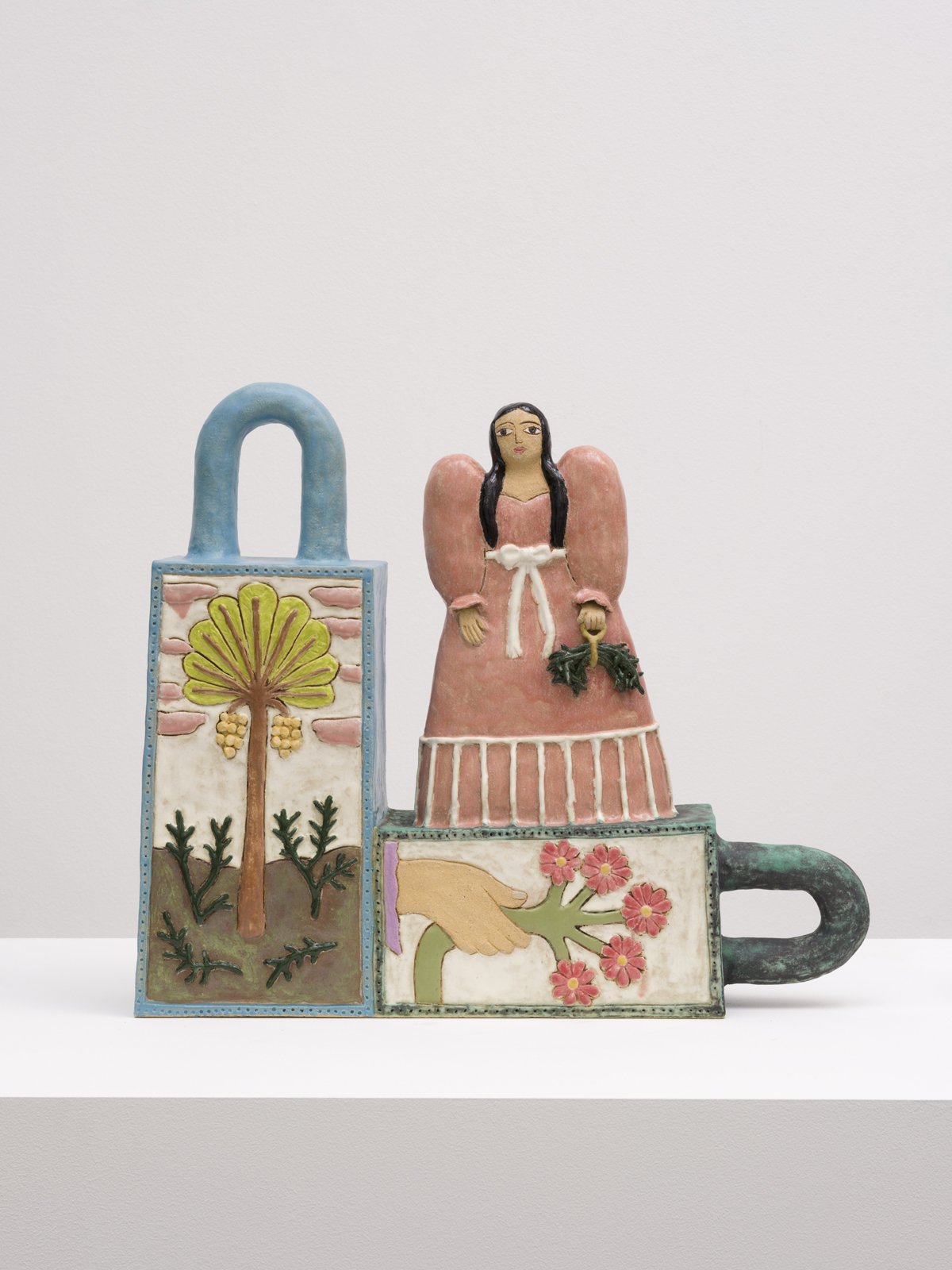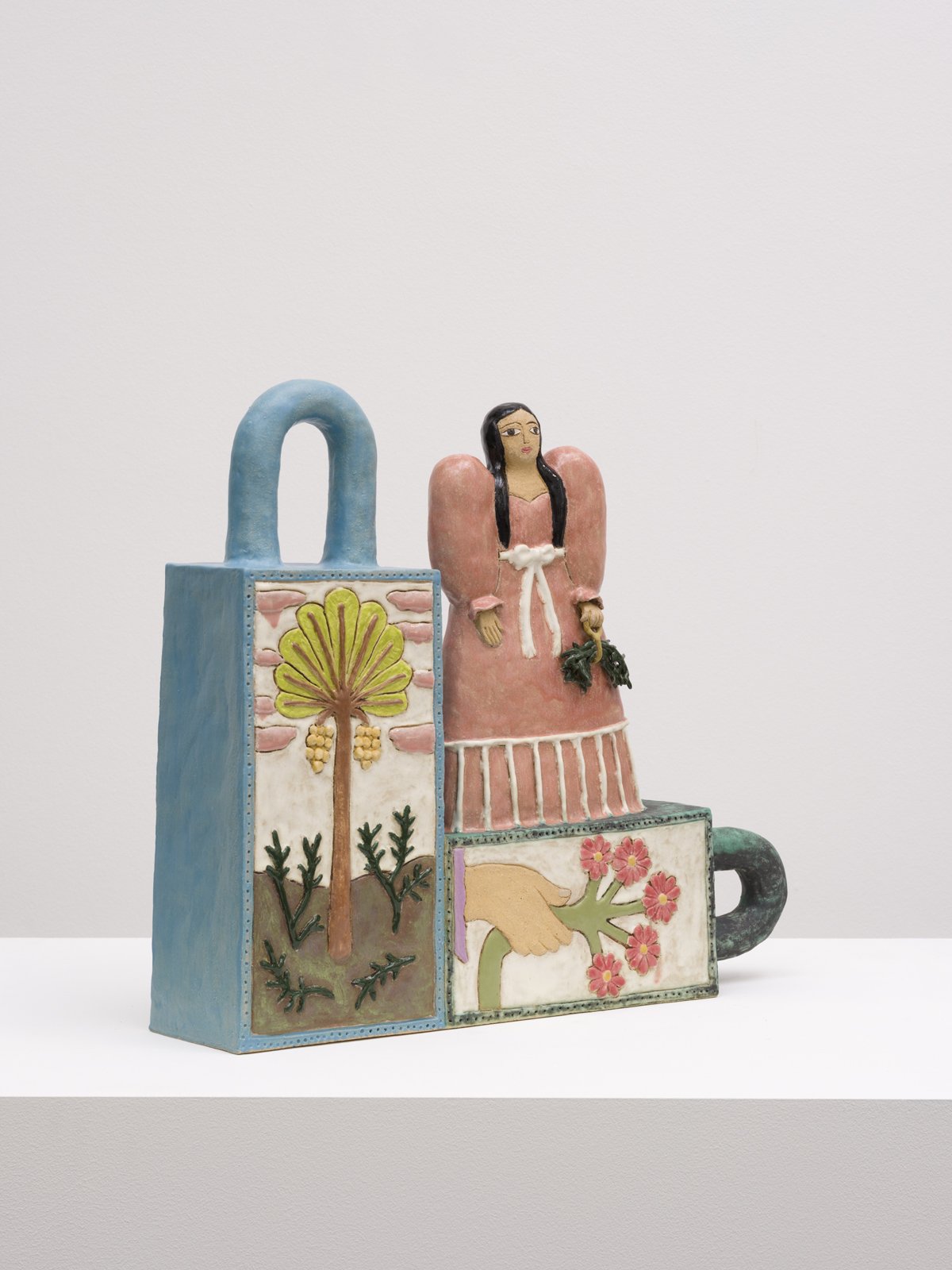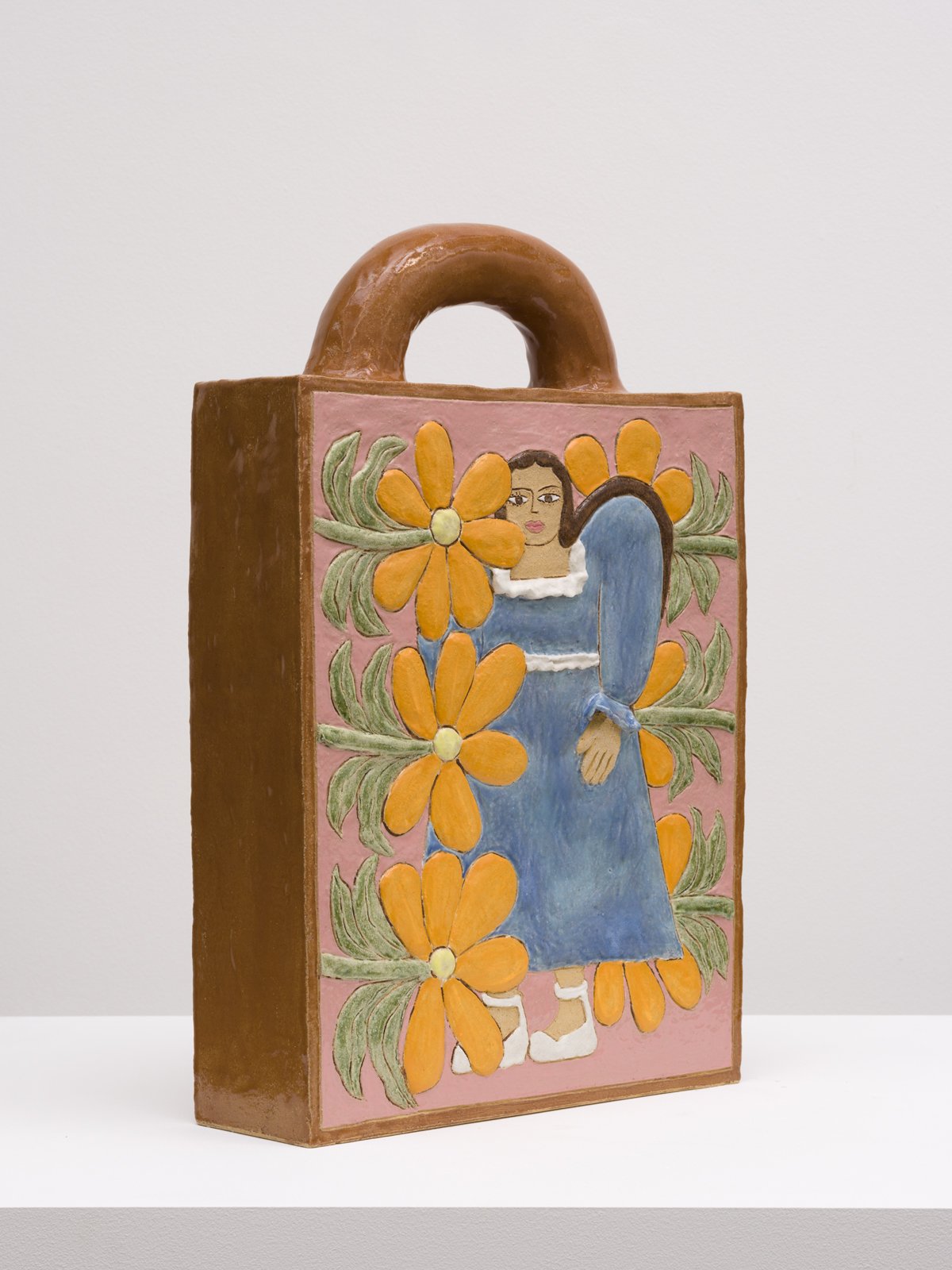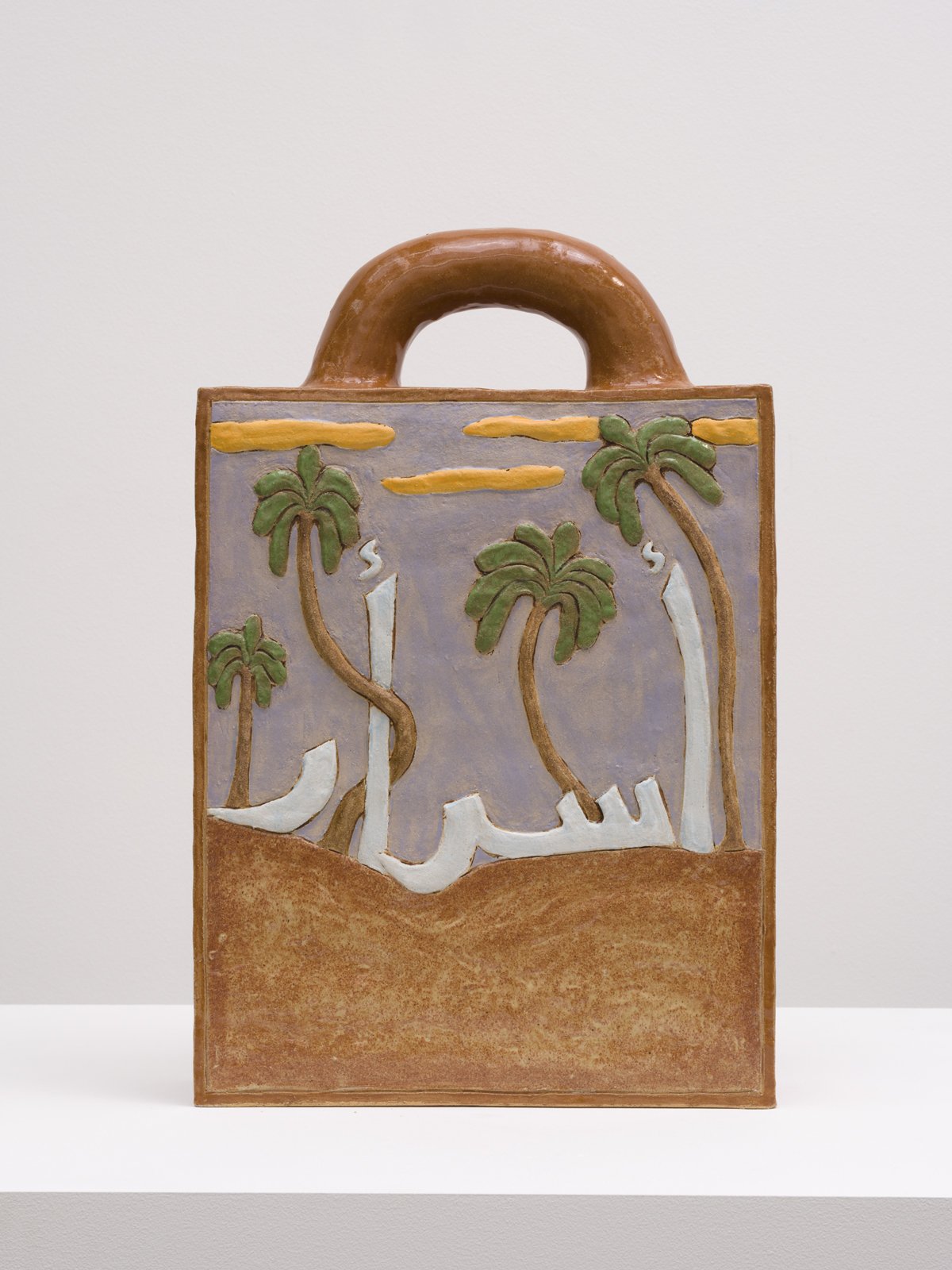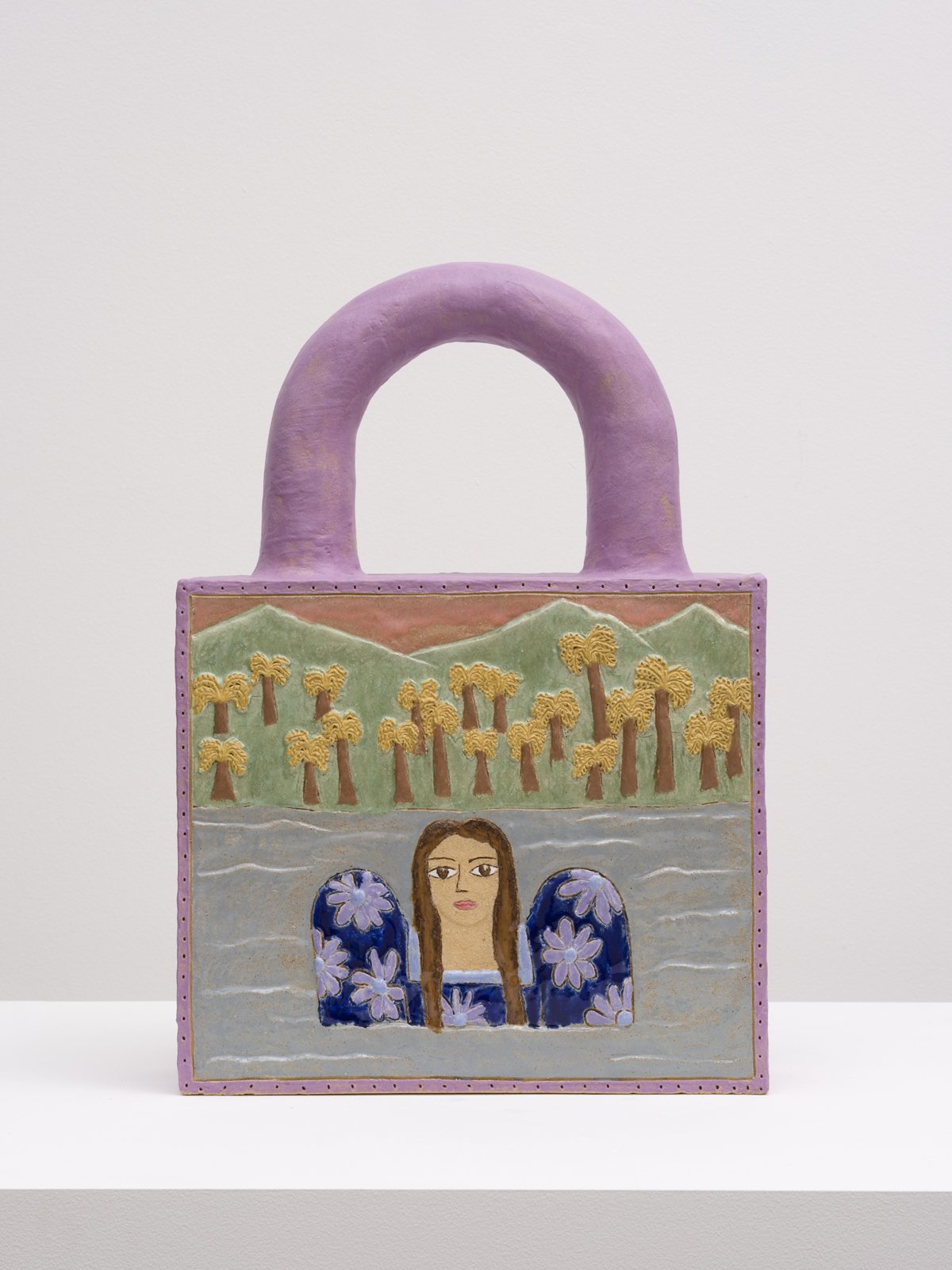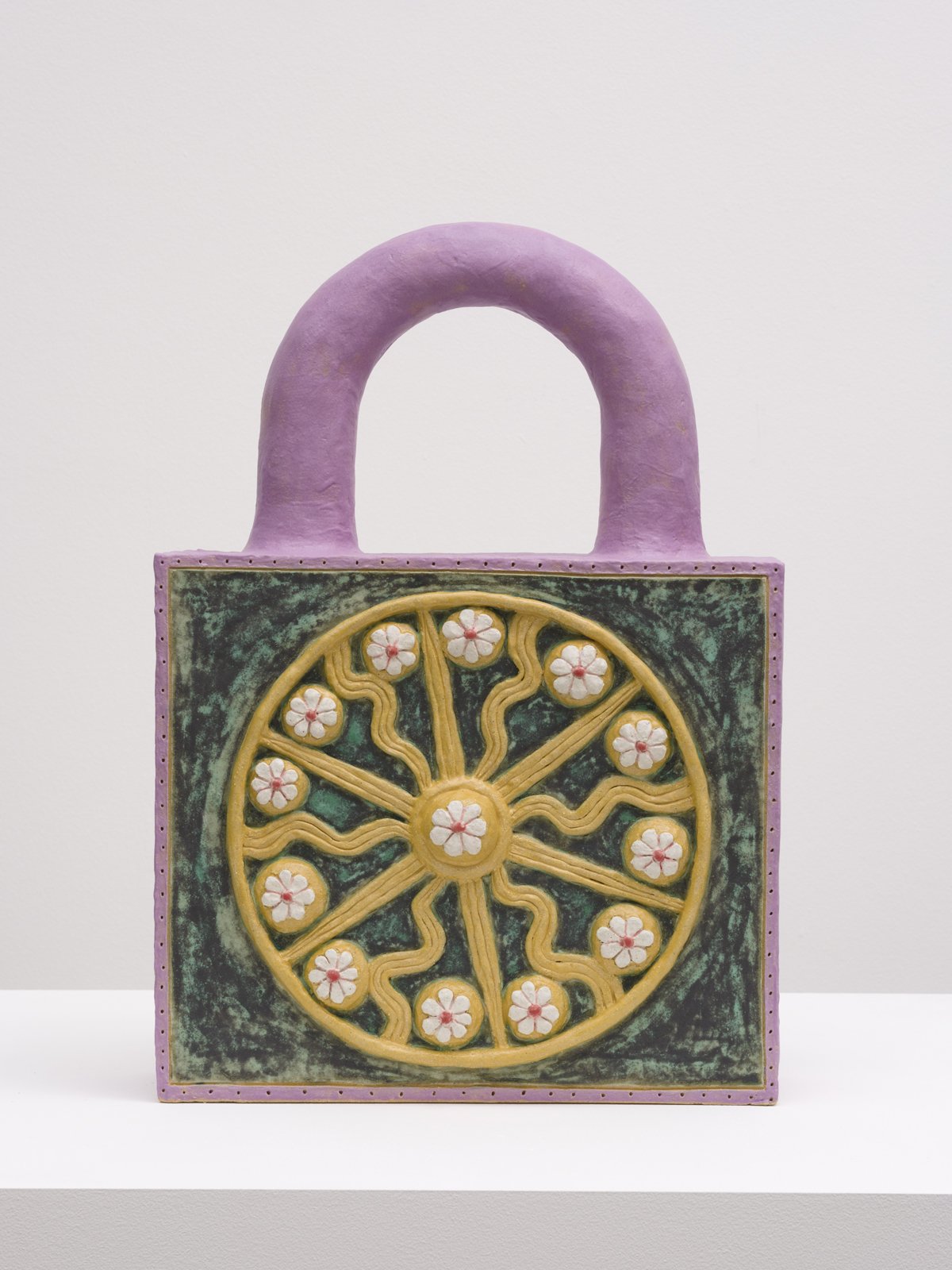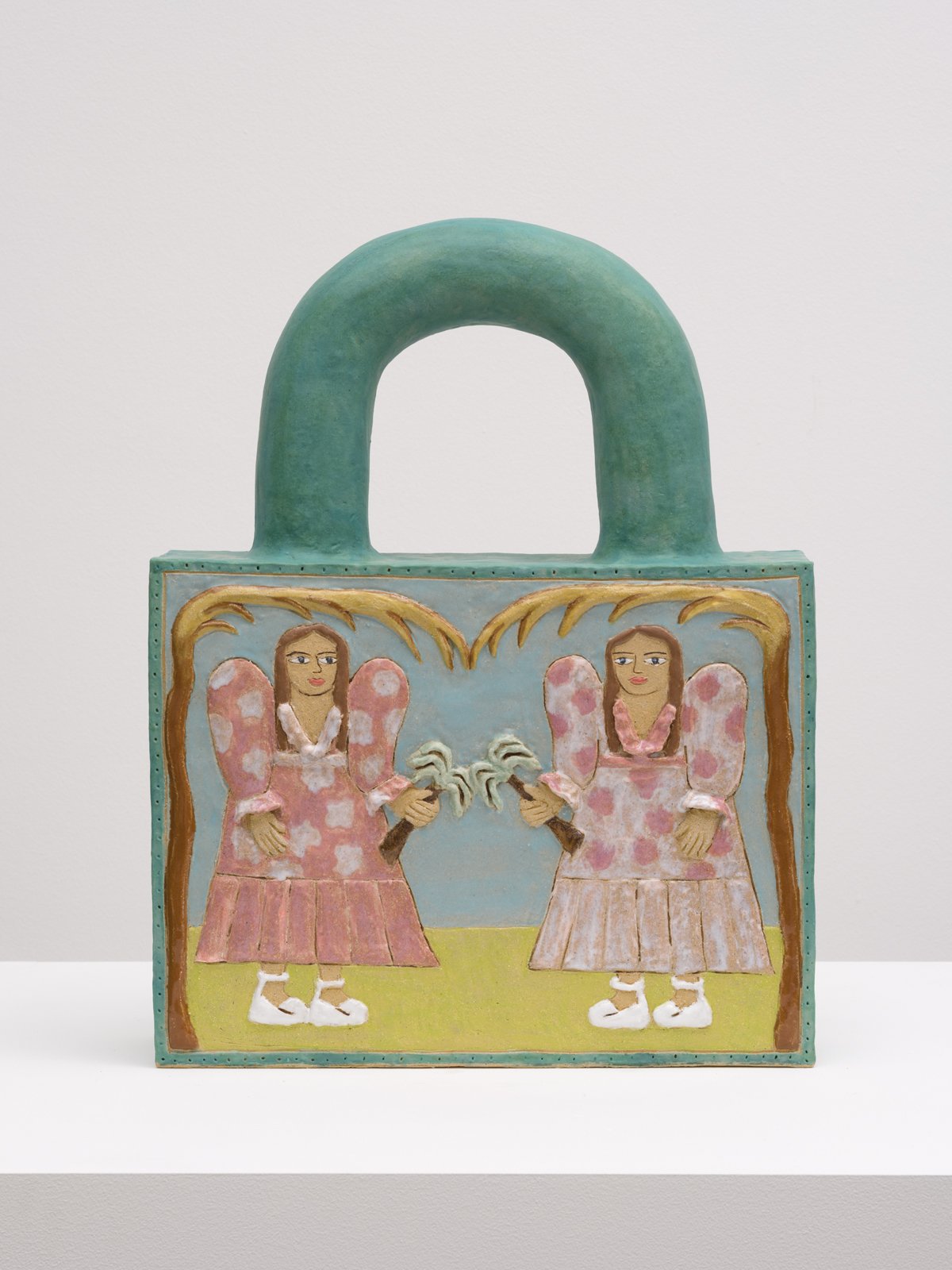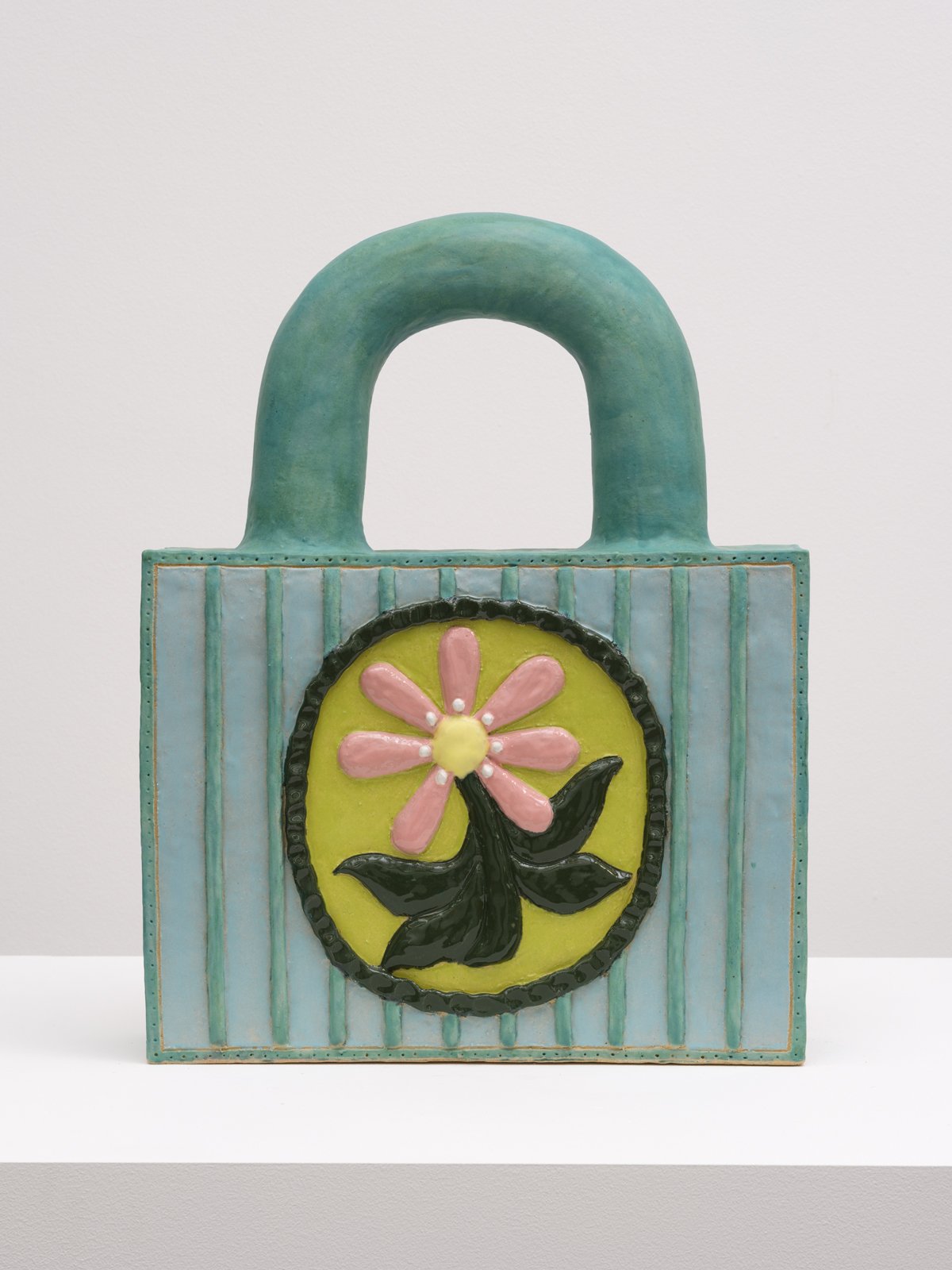Nineveh Fashions
The Pit LA
October 30 - December 18, 2021
This exhibition consists of hand-built, ceramic “girls” and “handbags.” The exhibition is arranged in runway fashion to model Yousif’s interpretations of the cosmic baskets often held by persons of prestige in ancient Mesopotamian and Babylonian art, and the cottage-core gowns women sewed from Simplicity patterns in 1970s Iraq. These forms and styles, in part, celebrate the artist’s mother who ingeniously balanced domestic chores, being a chemist, and child-rearing with making the occasional, exquisite painting of badass queen-goddesses like Semiramis, before emigrating with Yousif’s family from Iraq to Canada.
Yousif borrows widely from antique and pop cultural sources, often combining them into “anything that looks fabulous,” as she says. Beyond this, though, her sculptures become unintentionally educational about her Assyrian-Chaldean roots, as she explores her own ancestry through an immigrant’s eyes. Iconography is parsed and compressed as Yousif pushes, bakes, and paints ancient art motifs (arbor vitae; all-seeing-eyes inspired by Sumerian idols) onto sculptures that adapt contemporary signifiers of identity, like musical taste and couture. Pop icons like Fairuz, meet Viktor and Rolf’s 1999 Russian Doll collection, meet bas-relief rosettes, meet the Tigris River and swooping Arabic script, all to share Yousif’s playful revisions of civilization’s chronology. Molding antiquity into modern time pushes symbolism forward, and imbues her figures with a charisma that invites collisions between the secular and the sublime.
Yousif builds her sculptures out of coils, and their size denotes the limitations of her kiln’s height. This design restriction is a fun puzzle as Yousif determines how small sculptures can be “substantial… as big as possible to make an impact.” As art history knows, small totemic objects can have major mojo. To increase impact, Yousif has built installations that architecturally allude to grottos and alcoves that amplify connection through intimacy, while densely populating other parts of her exhibitions’ spaces. These formal installations create exactingly fetishy dollhouse-effects that counterbalance her clay’s chilled-out surface treatments. For example, her love of its tan, “gritty grog” results in the creation of her girls’ unglazed faces, whose olive-skin remains inclusively multicultural.
There’s a decadent pride and glamour here that invites viewers to imagine lavish Empire parties. Considerations of class cannot be ignored: palm trees line Rodeo Drive just as they did royal palaces’ red carpets. Nineveh started as a Neolithic village and grew into the capital of the Assyrian Empire, leaving over 7000 years of civic history in its wake. Its contributions to culture are undeniable, despite the oppression that it and its neighbor — Babylon — have sadly become shorthand for. Maryam Yousif acknowledges this tension by reminding us that simplistic reductions are destructive, and by the way, not so much has changed. High-fashion’s exclusivity is dressed down by its emulation in humble clay. Like overgrown cookie-jars, these sculptures are warm and collectible precisely because of their equal reverence for mundane folk art and our centuries of elite statuary that’s sacrosanct in its perfection.
